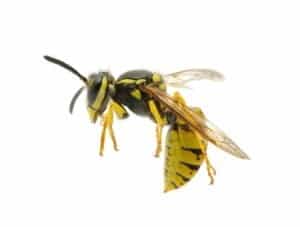

Every season has its own perks and drawbacks, and for southern states in October, one drawback is definitely the strong presence of yellow jackets. It’s important for everybody, especially homeowners, schools, and businesses, to be prepared with proper yellow jacket pest control in order to stay safe.
Yellow jackets, named for their yellow and black bodies, are wasps that pollinators. They eat beetle grubs, flies, and other harmful pests, but they are also pests themselves who scavenge on meat, fish, and sugar. This makes them incredibly problematic around trash bins and at picnics where such types of food are common. Since they are ground-nesters, they are most commonly found under porches and steps, in sidewalk cracks, and at tree bases.
Unfortunately for humans, yellow jackets are incredibly aggressive when defending their colonies, and they will sting targets more than once in the effort to protect their territory. These stings are painful and have the potential to cause severe allergic reactions in certain people.
Yellow jacket pest control must be done carefully since yellow jackets do play important roles as predator to other damaging insects. Pest treatment should really only be applied if the yellow jackets pose a stinging threat to people or pets, as is common on school playgrounds. This occurred at Lakeside Middle School in Columbia County, Georgia, where 11 students were stung by yellow jackets, one of whom had a severe reaction.
Schools, homes, and businesses alike should use a pest control company to handle yellow jackets since they can be dangerous when provoked. A pest control professional will begin with a thorough inspection of the grounds in order to locate yellow jacket nests and become familiar with the habits of the worker wasps. Treatments vary, but the best options are environmentally conscious and safe to humans. Once the nest becomes inactive, it should be removed and destroyed to prevent future habitation.

Already a Customer? Sign In Here